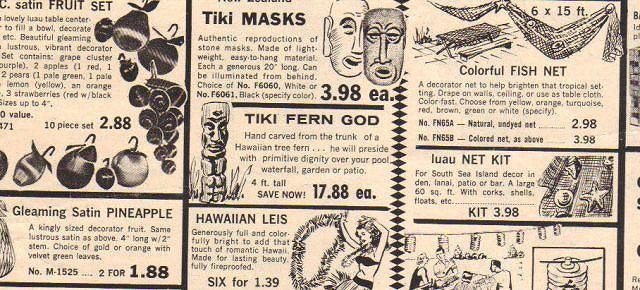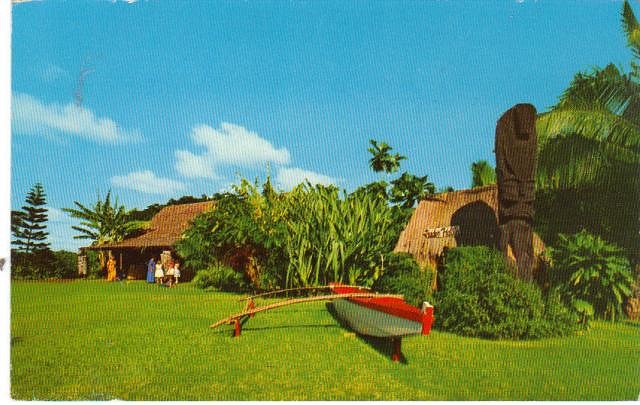Tiki Central / General Tiki / The Mystery of the Hawaiian Fern Wood Tiki
Post #514773 by TIKIBOSKO on Wed, Mar 3, 2010 10:22 AM
|
T
TIKIBOSKO
Posted
posted
on
Wed, Mar 3, 2010 10:22 AM
Hey Sabu, great post, I saw your reference to the fern wood carving a couple of weeks ago and wanted to chime in but I was busy, as you can see below I have some opinion about the subject, my post is way too long.
The fern woods are there along with all the other very cheap state side Luau crap, meaning they must have been relatively inexpensive to procure and have shipped to LA. Then as now Hawaii was not a big center for production of Tikis just think about how many places there feature O.A.’s work. I suspect a lot more was being shipped TO Hawaii you wouldn’t believe how many times I’ve heard that a Witco is a hard wood piece bought and carved in “Hawaii”. We (tourists) love more than anything to have this connection to anything “authentically” carved by Hawaiian natives or locals (on the Islands), I’m sure there is a whole psychological explanation for this. There have always been and still are a great may people there just happy support this idea and take your cash, you don’t have to look further than ads on Tiki Central to confirm this. The work is obviously produced in Tonga, Indonesia (you name it) the seller swears (or greatly implies) he masterfully made the work in Hawaii. Most people have no idea what a well carved Tiki should look like and they are all too happy to take this B.S. hook line and sinker, I covered this in last years talk at Oasis (you where there Sabu). This is a pet peeve of mind so let me get back to the subject.
I have a way bigger photo of this carving (it’s so big it looks fake) someplace, I would swear the texture looks to be fern, probably not it’s gigantic, but I know they get pretty big in some parts of the Pacific on the other hand if not what kind of wood is it? All this guys work have a very ridged overly accurate faces that seem to be skwooshed feel to them. These look to be done by the same carver, probably in Hawaii in the mid 50’s, they were obviously show pieces (not usually for a home bar) and they don’t look anything like the small simple ones. On the other hand you can see Kalani who came around a short time later (early 60’s) has a much more of a grasp of form, I love this guys work it is beautiful, but if you also think about it his work looks to have been influenced by the simplicity of the small (late 50’s) fern wood Tikis. Sorry for the size of the next Ulu Mau Village photo he’s are a few more examples of his work, he really took this style to the next level.
Who came up with the mass produced fern designs I have no idea but I can take a guess why the pieces are so bold, it is a crappy material to work in, forms had to be bold because it won’t hold any detail and a few seasons out in the weather will round out any rough shapes making them look even more deliberate. They are quite obviously supposed to be Hawaiian style but when simplified some look amazingly modern others a little clunky. Why fern? It’s an awful material but easy to carve and light weight compared to palm or hard wood. I could go on and on but if you want to read this sometime soon I’ll cut it short, again great job Sabu. My very best Alohas, Bosko |



